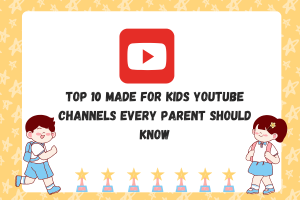How to Transform Learning to Real-World Experiences?

Why you are wasting time in playing video games? Can’t you complete your pending homework? Why you see down in the dump when asked to study?
If these are the common questions you have been asked as a student, or being an educator or a parent, you fire questions at your kids, then this article is for you.
Imagine, what if along with such situations, your child asks you the reason behind triggering you towards studies. What is the real-world value of studying these things?
In this direction, the educational systems of many countries have been focusing on the academic requirements of the students. For this, they entitle their educators to fulfill the students’ requirements. How? Taking many tests in the entire academic year is the approach which leave the educators muddled up between giving quality lessons and ensuring passing test scores through their curriculum. The biggest challenge faced by most of the educators is they lack interest exploration in their teachings. Then they look for homework helper. Sometimes it gets hard for the students to study conceptually, creating academic delays for them. Believe it or not, the lack of the conceptual-based learning and connection of the classroom learning with the real-world.
There are more than 11k students who enroll in schools and colleges of a state of a developing country every year. Around 50% of them go to the graduation level. But the shocking data is the number of the students who are willing for post-graduation courses. It is nearly 4% of the students become premasters of a subject. Here are some ways in which you can give the answer to the students’ ‘why’.
#1. Serve the students’ the urge of having multiple perspectives :
TedTalks is the key here. Students of the current era are very curious, inquisitive. Gone are the days when you would find credulous kids in your classroom. Now, they look for getting multiple perspectives for every concept. You can introduce them to a TedTalk discussion on the topic.
How and what to do?
No, I am not adding more elements in your plate. Rather, I am asking you to ask your students to find a speaker of their choice discussing the same topic. Yes, this can be your teaching model.
This will let the students do some task by themselves promoting interest exploration resulting to increased engagement. Furthermore, the students can create the required mindset for understanding a topic making their learning more authentic.
#2. Everything should be real :
You can answer the students why only by involving them. After the lecture on a particular topic, ask the students to have some feedback of the professionals.
How is it beneficial for the students?
I can list several benefits which they can reap by doing this. Taking some feedback from real professionals in the real world will help them make their mind and choose the apt career path. Moreover, building mentorships, improved communication skills, enhanced people skills are some of the other advantages bound with it.
How can you help the students?
The best way of doing so is bringing real professionals into the classroom. Invite effective and influential guest speakers and discuss the topic. It can work with students at every level. If you are teaching grade three students, teaching them mathematics, or helping them in how to write an assignment, then also you can invite who id good in numbers. They can help the students understand the concept behind division and multiplication.
#3. Ask them questions :
At the end of every lesson, test how much the students have understood. You can do this by implementing reflections. Allow them to share how they can connect it with and how interesting it was.
What if they don’t find any connections?
The answer here is “introducing them to transferable skills.” That means let the students know the magic of transferring their skills and using the learnt lessons in other professions if they would be unable to connect it with one.
#4. Challenge them :
Introducing them to complicated situation and giving them a challenge is a way of exploring educational interest in their lives. Ask them to determine how the lesson you have taught can be an answer to a problem. Ask them to initiate and help them with time. Project-based learning is the one which you can gift to your students. This will boost their motivation and help them study with enthusiasm and positivity.
These are the best techniques which being a teacher you can use to develop your students’ correct mindset and align it towards success and conceptual learning. After doing so, you will experience a steep shift in their thinking patterns. So, practice this and share your experience. Good Luck!
Author Bio :
I’m Jessica Gross. I read and write every day on various topics related to society, culture, academics, business and lifestyle. Also, I have been working as a guest post writer and an essay editing service provider for more than a decade. To read my posts reach ContentWolves.com.






